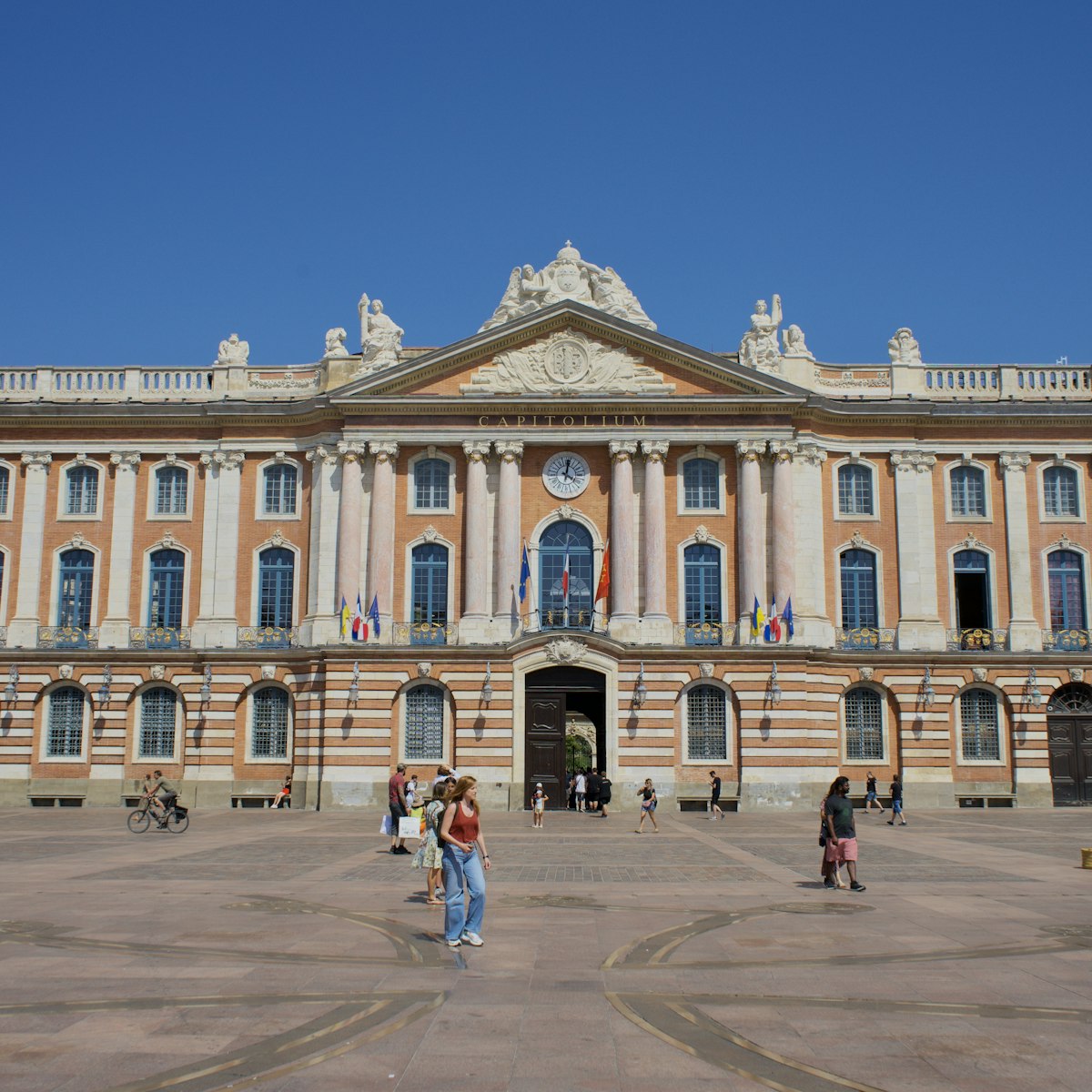Set inside a cavernous 100m-long (328ft) exhibition hall, Aeroscopia is a celebration of aviation and also of the role Toulouse has played¬Ýover the last 100 years of powered flight. From 1909‚Äôs wooden Bl√©riot XI to the monstrous Airbus A380 Superjumbo, this aerospace museum on Toulouse‚Äôs north-western edge is a must for any wide-eyed aviation enthusiast.
Oh, and the museum also houses not one, but two Concordes. Arguably the most iconic commercial aircraft ever built, they’re Aeroscopia’s pièce de résistance, but this place also tells a human story that celebrates the people who made many pioneering advances and daring stunts in the name of progress.
Located at Toulouse’s main airport, it’s a little way out of the city center, but the sheer size of the place and the plethora of information and interactive exhibits mean that there’s plenty to see and do.
Insider Tip
The first Concorde you’ll see inside the hangar is a pre-production aircraft used in test flights, but outside on the tarmac is a real Air France Concorde (reg number F-BVFC) that retired from service in 2003. It’s only open to look inside at 11am on Saturdays and Sundays, so make sure to arrive early and ask at the desk.
How much time you need to visit Aeroscopia
If you have 60 minutes
The three largest aircraft in the hangar form the greatest hits of a shortened itinerary. With its bulbous frame soaring toward the 23m-high (75ft) ceiling, the Super Guppy cargo plane dominates the initial entrance into the exhibition hall. Its rotating nose is opened up, giving you a cross-section view of the enormous cargo bay that was constructed in the 1960s to help NASA transport equipment for its space program.
Next to the Super Guppy sits a large widebody Airbus A300. While it doesn’t look hugely different to some aircraft flying in the sky today, its significance is massive as it was the first commercial plane ever built by Airbus. The A300 is available to explore, and the floor has been converted to glass to allow visitors to see the cargo bay below.
Don’t leave without taking a peek inside the Concorde at the far end of the hangar. While only a prototype, it’s a priceless opportunity to see how surprisingly narrow it was inside or to wonder how the pilots even used the mindbogglingly complex instrument panel.
If you have 2 hours
Turning left from the entrance into the hall is a comprehensive history of aviation along the back wall, with some fascinating photos of the genesis of aircraft through to the jet age. There are also profiles of some of the pioneers of aviation throughout the 20th century, including the story of Clément Ader, the French inventor who claims to have flown his Eole aircraft a distance of approximately 50 meters in 1890 – some 13 years before the Wright Brothers (though there’s no film or photos of this event in existence).
Probably the most famous aircraft currently flown by Airbus – a mammoth 73-meter A380 – is sat on the tarmac outside and both of its doubledecker floors can be explored. Its interior includes interactive exhibits for children to play on, and there’s a view into the modern flight deck (which makes for an interesting comparison with Concorde's web of switches and gauges).
If you have half a day
There are a host of smaller aircraft dotted around the floor of the exhibition hall and a few hanging from the rafters, all of which have stories to tell. Beneath the tail of the A300, the Saab 35 Draken was the first Western European-built combat aircraft with true supersonic capability, while the nearby Blériot XI was the first heavier-than-air aircraft to make a flight across the English Channel on 25 July 1909.
There are also talks given throughout the day, though some may be in French – check ahead at the desk. Special exhibits can often be seen too, such as the recent Star Wars X-Wing built entirely out of Lego bricks (these cost an extra few euros to visit).
History of Aeroscopia
Airbus has been based in Toulouse since its formation in 1969, and every Airbus model has been produced here since the prototype Airbus A300 took its first flight in 1974.
As πÛ∞˘≤π≤‘≥¶±‚Äôs aviation capital, Aeroscopia was opened in 2015 next door to Toulouse-Blagnac Airport ‚Äì 8km/5 miles from the city center ‚Äì and has served as one of the region‚Äôs biggest attractions ever since.
At the end of 2018, a new 2-hectare (19.7 acres) tarmac space was created on the site, making it possible to visit another aircraft hosted on this tarmac – the A380-800.
Tickets and other practicalities
Adult tickets cost €15, while students, minors, seniors and disabled individuals can enter for €12 (children aged 6 and under get in for free). For an extra €3.50, guided tours of Aeroscopia or an audio guide are available. Book ahead of time on to avoid waiting in line.
While weekends are always busier, they’re also the only time the Air France Concorde on the southern tarmac is open to visitors.
The T1 Tram is the best way to reach Aeroscopia by from central Toulouse. Leaving from Courthouse station, the tram takes around 40 minutes to reach the Beauzelle-Aeroscopia stop (from which it’s about a 10-minute walk). There’s also a restaurant located on-site which is handy for longer visits.








